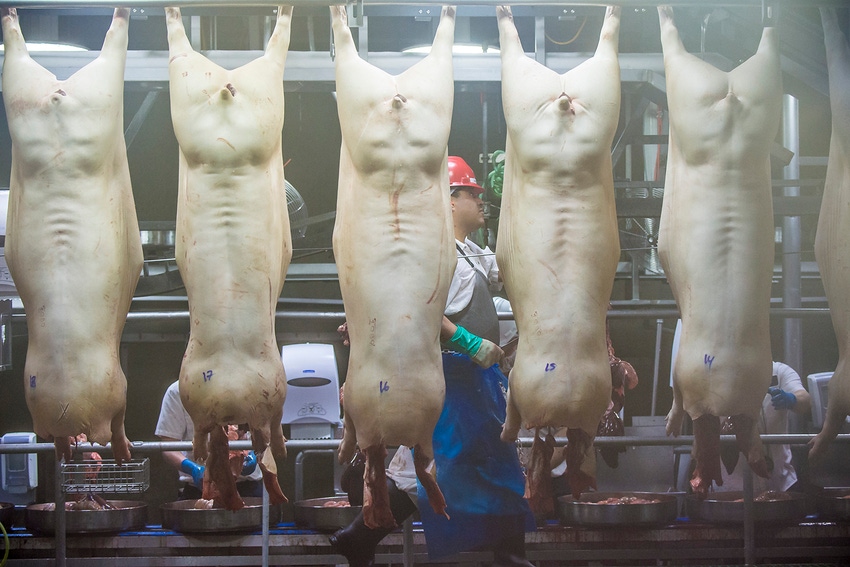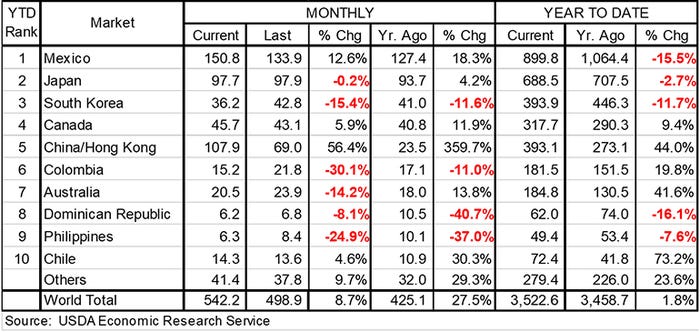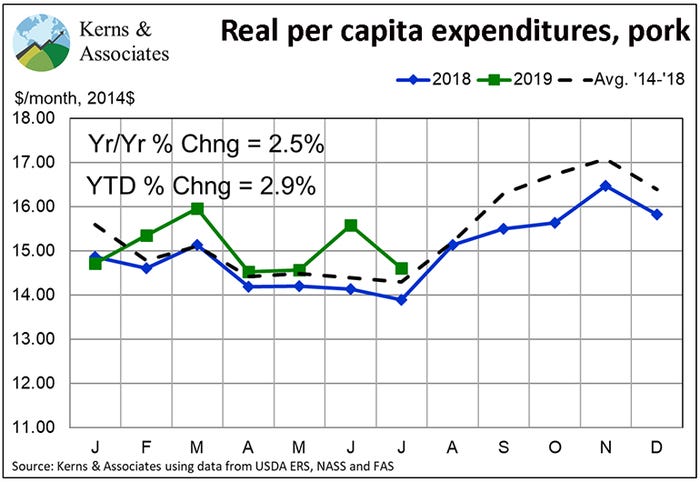It’s all about supply and demand
The industry is capable of running above total rated capacity for short periods. Such should be the case this fall.
September 9, 2019

To paraphrase a former president: It’s supply and demand, stupid. We know there are complicating factors in this market, but it still boils down to the basic economics.
Hog supplies have been very close to expected levels. You can’t tell that from last week’s slaughter since it was about 100,000 head short of our computed level of 2.302 million head due primarily to Hurricane Dorian and the trouble it caused Thursday and Friday in North Carolina. Any hogs left on farms on the East Coast will likely be cleaned up this week as we hear Smithfield will run at least part of their plants on Saturday.
Numbers will remain ample but don’t be fooled by the year-on-year comparisons this week and next. While 2.527 million and 2.573 million are indeed big slaughter totals, the +9% and +10% figures you might see for these weeks are primarily a function of Hurricane Florence one year ago. Recall that Florence parked herself over the Carolina coast and dumped prodigious amounts of rain that kept some plants down for more than a week. Dorian got it in gear after getting near the U.S. mainland and moved away pretty quickly, leaving far fewer after-effects than did Florence.
The message, though, is that we will be at 2.6 million head per week by the end of September at the latest. That figure will move to 2.7 million in October and, according to my calculations based on historic trends and the June Hogs and Pigs report, rise to a peak of just over 2.8 million head in mid-December.
One point of comfort is a sneak peak at National Hog Farmer’s annual packer capacity survey which I completed two weeks ago. It will be published soon. That survey says we can handle 2.755 million head in a 5.4-day workweek. I have used that work week for many years for consistency, but it was based on the level of packer operations that, back in the late-1990s, would not have severe impacts on hog prices. The total supply of pork at high slaughter levels would push prices lower but if slaughter totals could be handled in five weekdays and Saturday operations amounting to 40% of the total, capacity in and of itself would be basically benign.
The industry is capable of running above total rated capacity for short periods. Such should be the case this fall. Supplies that exceed capacity for more than six or eight weeks in the fourth quarter (as they were in the fall of 2016) would spell price pressure beyond just the tonnage impacts.
Last week’s increase in hog weights adds to our supply concerns. Producer-sold barrow and gilts weights jumped almost 2 pounds to 210.8 after spending seven weeks near 209. Any “backed up” hogs in North Carolina will add to the increase this week. Warmer temperatures over the next 14 days may mitigate some of this positive pork supply factor and large amounts of fresh, more palatable corn are still a ways off it appears.
On the other hand — and you knew it was coming, right? — demand has been outstanding.
Exports were the largest ever recorded for July and were 27.5% larger on a carcass weight basis versus July 2018. Among major U.S. markets, only shipments to South Korea were lower this year. (See Table 1) Shipments to China/Hong Kong were up nearly 360% in spite of all of the hand wringing and naysaying. Total U.S. pork exports are now 1.8% larger than in 2018 through July and the value of those exports year-to-date is up 1.3%.

The story for pork variety meats is not nearly so rosy. Total shipments in July were up slightly from June and were 31% larger than last year but year-to-date shipments still lag 2018 by 2% and the value of those shipments is still down 19%.
Why are variety meats important? Because they add to the value of a pig and that total pig value is the basis for packer bids for hogs. Packers do not care where they make their money. Hams? Loins? Ears? Snouts? Salivary glands? All are fine by packers. Adding value to variety meats allows packer bids to rise without raising the price of carcass components that are more desired by U.S. consumers. The catch is that a major selling point for variety meats is their price and putting tariffs on low-priced items can move them out of the “affordable” category for many of those price-conscious foreign consumers. China/Hong Kong remains our largest variety meat market but shipments there are down 2.7% year-to-date in volume and down a whopping 27.2% year-to-date in value. Soft China/Hong Kong and Mexico demand for variety meats allows the entire price structure of those products to decline significantly.
Could export demand be better? Of course it could. China’s pig losses are now showing up in record prices and unprecedented acknowledgement of the situation by the central government. There are real shortages of pork in China now. The trouble is that the trade war and resulting tariffs have left the United States as the supplier of last resort for Chinese buyers. Our product is more expensive than any other in the world. It is still profitable for Chinese merchandisers, but they are likely buying all they can from whoever they can buy it from before turning to U.S. companies.
Finally, domestic pork demand continued strong in July with real per capita expenditures for pork exceeding their year-ago level by 2.5%. Pork RPCE has been higher than one year ago in every month since January and are up 2.9% year-to-date. Per capita pork consumption has been larger than one year ago in every month so far in 2019 — with higher production and lower-than-hoped-for exports being the main drivers. The real (i.e. deflated) price of pork has been either lower by a smaller percentage than the increase in consumption or higher than one year earlier in every month since January as well. Those combinations — and especially the past three months in which both real price and per capita consumption have been larger than last year — mean only one thing: Higher consumer-level pork demand.

The die is pretty well cast for hog supplies through March. We’ll learn more about that on Sept. 27 when USDA’s next quarterly Hogs and Pigs Report is released. This means the focus will be on demand. Will domestic consumers and export customers continue to pay greater-than-expected prices? Will government policies get out of the way and allow us to compete on a level playing field? Those are key questions for the remainder of this year.
Source: Steve Meyer, who is solely responsible for the information provided, and wholly owns the information. Informa Business Media and all its subsidiaries are not responsible for any of the content contained in this information asset.
About the Author(s)
You May Also Like





